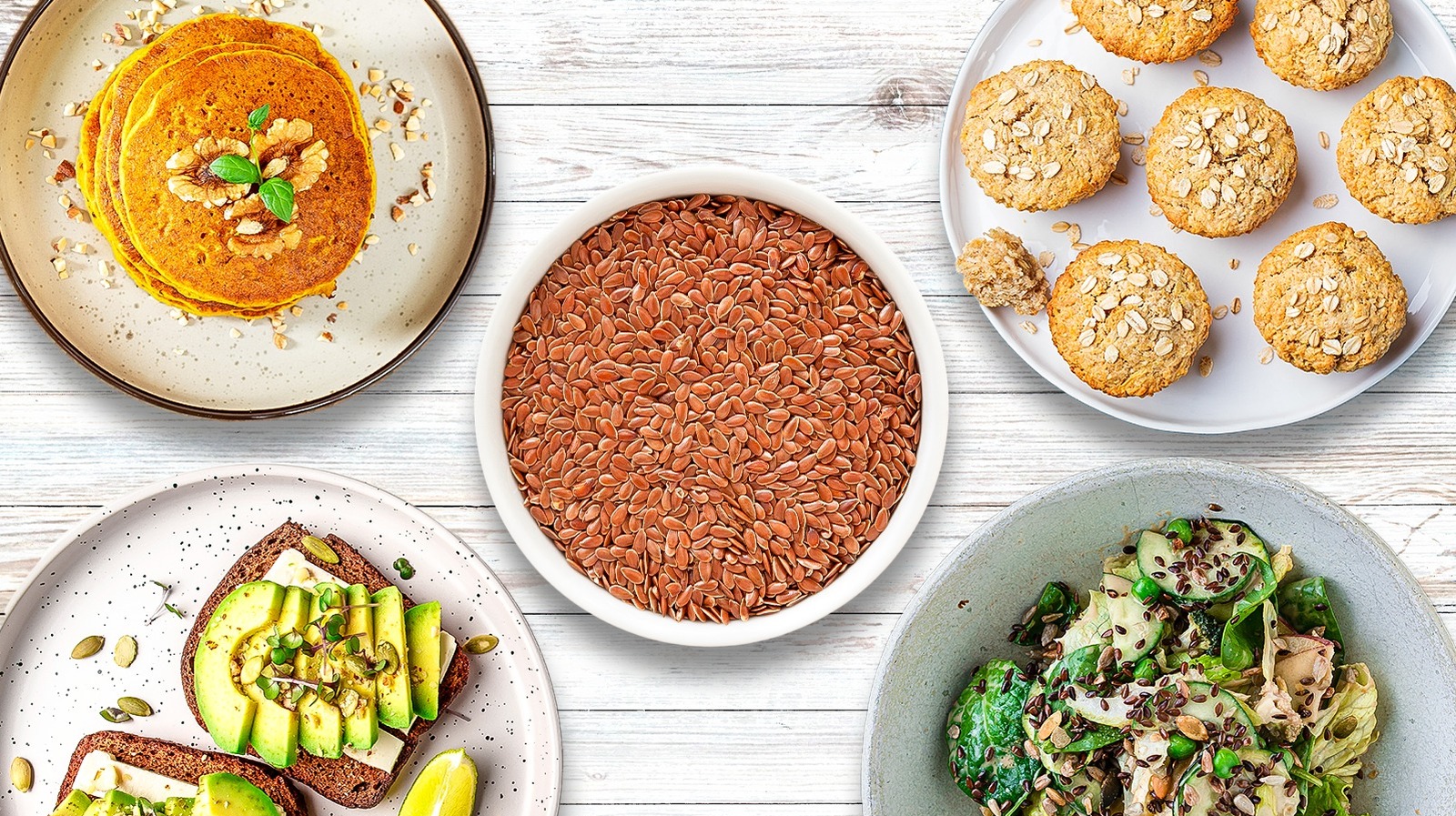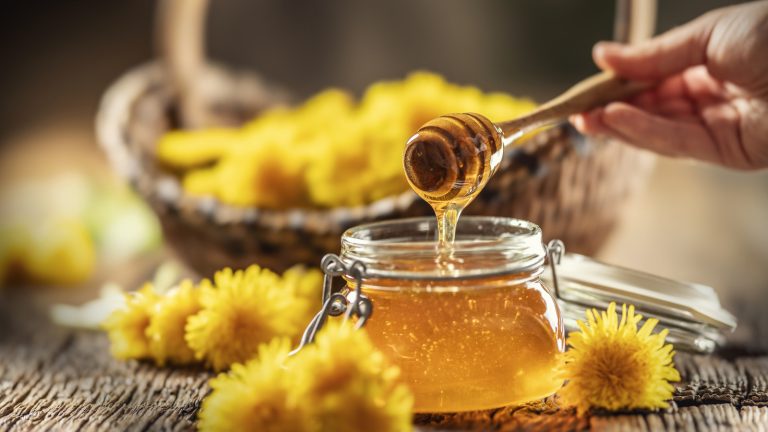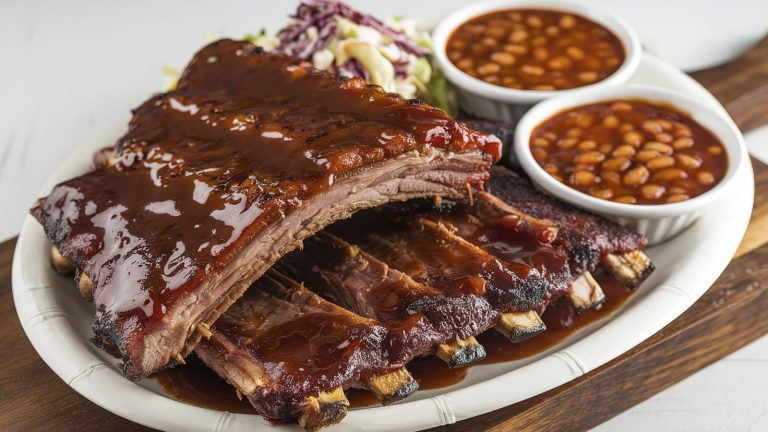You’ve likely heard that flaxseed is the superfood of the future. Perhaps you’ve ordered a smoothie at a high-end juice bar topped with toasted flax. Maybe you’ve noticed it in your whole grain muffin from that cute little farm-to-table cafe down the street. Or maybe you’ve seen it in the grocery store in the baking aisle and wondered what it was. Well, for those just dabbling in the nutrient-rich seed, your culinary life is about to change for the better. Flax is a small brown seed harvested from the flax plant. It’s jam-packed with fiber, protein, omega-3 fatty acids, antioxidants, and a slew of other important nutrients. To receive these fantastic benefits you don’t need much, just a sprinkle will make a difference. Consider adding flax to your daily routine by learning all the ways to use flaxseed in your cooking.
As a whole food plant-based recipe designer and chef with a Plant-Based Nutrition Certification from Cornell my job is to strike the perfect balance between flavor and nutrition. Luckily, flaxseed is delicious and can actually add an incredibly nutty flavor to your dish, while also providing a pleasing texture depending on how it’s prepped. They don’t call it a superfood for nothing!
1. Add texture to baked goods
There are a few ways that flaxseed can be prepared. Whole flaxseed does not break down in our bodies, so I prefer to grind it first. You have the option of buying it pre-ground at almost any store. This helps your body reap the nutritional benefits and releases the nutty flavor. However, bakers will sometimes use whole flaxseed to add texture and an aesthetic appeal to their baked goods, especially bread. It can be sprinkled on top or mixed right in. The seeds are chewy and rather beautiful.
When the seeds are ground they offer a hearty and robust mouthfeel. Think of it like adding bran or whole grains to your baked goods. When the seeds toast up in the oven, their flavor becomes even more irresistible but remains rather mellow. If you’re the person who orders the whole grain muffin, eats steel-cut oats, and likes a buckwheat pancake then I would highly recommend adding ground flax to your baked goods. Flax absorbs moisture and becomes gelatin-like, so be sure you know how to add it so as not to dry out your cookies or bread. If you’re not an expert baker, play it safe by using a recipe that already incorporates them like flaxseed vegan chocolate chip cookies to give your dessert a texture upgrade. You always have the option of sprinkling flaxseed on top of your baked goods.
2. Use as an egg replacer
There’s a reason that vegans know quite a bit about flaxseed, and it’s not necessarily because they are nutritionally driven. Heck, french fries and Oreos are vegan. The reason flaxseed makes its way into so many plant-based recipes is that it can act as an egg replacer for baked goods. If you’re vegan, plant-based, or have an egg allergy then there is no longer a need to worry about missing out on the art of baking. Making a flax egg has never been so easy, and it has some incredible benefits varying from flavor, to texture, to nutrient content. It even contains omega-3s, just like an egg that comes from a chicken that has been supplemented with flaxseed.
So, what is a flax egg? Flax eggs are made by mixing 1 tablespoon of ground flaxseed with 3 tablespoons of water. Let it sit, and the seeds will absorb the water making an egg-like texture. You can speed up the process by using hot or warm water. Once it’s congealed, add it to your recipe like you would an egg. Flax eggs do not work for foods with whipped egg whites like merengues, and I would suggest using aquafaba (the liquid in a can of chickpeas) instead to achieve this fluffy texture.
3. Top your salad
A simple way to incorporate more flaxseed into your diet is by simply sprinkling it on your salad. You can do this in whole seed form or in flax meal form. Flax meal is simply ground flaxseed. Now, I wouldn’t recommend adding flax to your iceberg, shredded carrot, red onion ring, or whole cherry tomato bland and basic salad. It might feel out of place. Instead add it to one loaded with toasted chickpeas, shredded pickled beets, toasted nuts, fresh arugula, and roasted vegetables — a heavy, hearty salad worthy of flaxseed’s superfood powers. It’s perfect for a heavy salad that needs a nutty boost of flavor, and a little extra oomph.
Toast your flaxseed before adding it to a salad to enhance those extra nutty flavors. Do this with whole or ground flax based on your personal preference. Note that whole flax may get stuck in your teeth, so it may not be best served on a date or at a job interview. You can also add ground flaxseed to your salad dressing to thicken it and boost the flavor. To toast flax simply add it to a hot pan, stir it around until fragrant, and remove it from the pan. You may want to allow it to cool before adding it to delicate leafy greens to avoid any wilting brought on by heat. Seeds burn easily so keep a close eye on the hot pan as they cook.
4. Mix into pancakes
Perhaps one of my favorite applications of the ground flaxseed is adding it to pancakes. This works especially well for gluten-free or egg-free pancakes that are otherwise lacking a sufficient binder. Flaxseed, as we know, can act as an egg replacer, and can add texture and flavor. For pancakes in need of a little heartiness, flaxseed is your answer.
This is one of the best ingredients you can use to improve your gluten-free pancakes. Gluten-free pancakes tend to be dry, crumbly, or grainy. Flax can help to mellow any graininess, add moisture if added in the form of a flax egg, and help hold those bad boys together. Follow a recipe for vegan and gluten-free cinnamon oatmeal pancakes with flax, or simply add a few tablespoons of flaxseed to your dry mix. Toasted flax meal is a great topping for pancakes as well, and gives the butter and maple syrup something to cling to. Boosting your fiber first thing in the morning can work wonders for your digestive tract, which in turn, is beneficial for your overall health.
5. Make chewy granola bars
Why does every single granola bar taste like dessert? The refined sugars and seed oils are out of control if you’re looking for a healthy pick-me-up or a snack for your child. And the prices for a bunch of oats, protein powder, and corn syrup are unforgivable. Make your own energy bars at home using real food to power you through your day or workout. A top-tier ingredient to add to the texture, flavor, and nutritional value of the bar is ground flaxseed.
The flaxseed will absorb moisture, which can help the bar become more solid and bound. Flaxseed adds bulk, and as we know the seeds are extremely nutritious. Instead of a sweet syrup, use flaxseed to bind your granola bars together, just bake them in the oven to set the shape. Try using flax to make a crunchy crust for nut-free Greek yogurt granola bars, or make fancy and herb-alicous rosemary granola bars.
6. Add a nutty flavor to banana bread
What I love about banana bread is how no two loaves are ever quite the same. Common ingredients vary greatly, from walnuts to cinnamon, to buckwheat, to oats. Flaxseed, however, should be considered in almost every banana bread recipe, and here’s why: Bananas and flax go together like peanut butter and jelly. The nutty savory flavor helps to balance the soft and sweet intensity of the fruit. Ground flaxseed can be added to your banana bread as a binder, even though the mashed banana acts as a binder, and so does gluten or any eggs that are added.
In addition, your banana bread will have a more robust mouthfeel, and provide more nutritional sustenance. The extra fiber boost will help mellow any sugar spikes you might get from the bread. Add some whole flax to the top, along with fresh banana slices for a beautiful aesthetic appeal. If you’re not feeling confident in messing with your ole reliable banana bread recipe, try a new one that already has flax as an ingredient, like a gluten-free and vegan banana bread with buckwheat. Don’t forget to smear on the butter, peanut butter, or cream cheese before serving hot.
7. Boost the fiber in your smoothies
It’s no secret that fruit is loaded with our favorite carbohydrate, fiber. That’s right, fiber is a carb which is one of the many reasons you should be wary about fully cutting carbs out of your diet. Our good gut bacteria feed on fiber, and it is essential for healthy bodily function and especially helps to get things moving in your digestive tract. Boost the fiber in your morning smoothies with a tablespoon of ground flax.
Either mix the seed right into the smoothie, or toast and sprinkle them on top. If you mix flax in, it will help your smoothie to keep its shape even as it melts which is just an added bonus. This is because the seeds will slowly start to absorb the puréed fruit and any additional liquid. You may notice your smoothie has a bit of a rougher texture to it, and might taste a little more hearty as if you added nuts or nut butter. Try it in a healthy Black Forest smoothie, or one of your morning go-to items. No smoothie flavors are off-limits when it comes to flaxseed.
8. Make French toast
You might think eggs are an essential ingredient to French toast. And for most people, this is true. But if you can’t eat eggs, or simply want to switch things up with a lower-cholesterol alternative then give flaxseed a try. It’s a great egg swap when you’re having toddlers lend a helping hand in the kitchen so they don’t get a mouthful of raw egg. You’ll want to use a heavy amount of ground flaxseed, so if you’re not used to a diet with plenty of fiber you may find your system reacting.
Mix your typical ingredients together: Milk or plant-based milk, cinnamon, sugar, vanilla, salt, butter, or plant-based butter. Then add a heavy amount of ground flax, about a ¼ cup per six servings. Heat the ingredients on the stovetop or in the microwave to allow the flax to absorb the liquid quicker (as most people are in a hurry in the morning). Once you notice the liquid has a thicker and eggier texture to it, dip your bread in and fry it like you would your typical French toast. Flax can be substituted in place of eggs in just about any French toast recipe. You can also add ground flaxseed in addition to eggs for a double omega-3 boost. You may notice that flax French toast needs to cook a bit longer than the standard egg-laden recipe.
9. Boost the omega-3 in your porridge
For those consuming porridge in the morning, you’re likely already on track with your fiber intake. Good for you, I’m sure your gut is thankful. Whether you’re into buckwheat cereal, breakfast quinoa, cream of rice or cream of wheat, or oatmeal in its many forms, porridge is a fantastic way to start the day. It can be dressed up to just about anyone’s liking with anything from fruit to heavy cream to nuts. Try adding flaxseed to your porridge for an omega-3 boost.
Simply mix in a tablespoon or so of ground or whole flaxseed during the cooking process. You can also sprinkle toasted or untoasted flax on top of your hot porridge when serving it. The options are endless, but it does add a nice textured aesthetic to the dish, and a mild nutty flavor. Balance it with dried, frozen, or fresh fruit along with nuts and syrups. Enjoy it over your typical oatmeal recipe to spice up your mornings.
10. Sprinkle on avocado toast
Yes, avocado toast is infamous for its bougie, luxury facade. However, when you get down to it, avocado toast is not so very expensive if made at home. What makes it special when ordered out, is all of those ingredient upgrades that top the avocado toast. Lemon juice, fresh herbs, crunchy toasted seeds, tangy pickled vegetables, fried eggs … the list goes on and on. One way to boost your avocado toast is to sprinkle it with ground or whole toasted flaxseed.
This will add texture to your avocado toast, and a heartiness that might not be present if you use sourdough or white bread. Because ground flaxseed is quite dry, you’ll want to only sprinkle a small amount, or counterbalance it with a drizzle of high-quality extra-virgin olive oil. Don’t forget lemon juice or salt to intensify the flavor and get the mouth salivating. Note that you can also mix flaxseeds with other seeds like sesame or poppy seeds for a beautiful and unique appearance.
11. Bake crunchy crackers
Store-bought crackers are a waste of money if you have the capability to make them at home. With minimal ingredients, a fairly straightforward recipe, and a long shelf life, they are one of those foods that you could get the hang of making quickly. And how impressive would it be to serve to guests along with homemade dips? Flaxseed will help add a crisp to those chips.
Now, unless you’re a seasoned cracker maker I would recommend following a recipe at least the first go-around. Flax can be added to just about any existing cracker recipe but the bake time might vary, as much of the moisture will be absorbed by the seeds. Try gluten-free garlic and herb crackers that already have flax as an ingredient. Use whole flax, ground, or both. Whole flax will add to the look of the crackers and will toast up nicely in the oven. For more of a nutritional benefit, consider using ground flaxseed.
12. Use it when breading foods
Fried chicken, eggplant Parmesan, fried green tomatoes — these are just some of the foods that require breading and frying or baking to give them the crispy pizzazz we all love. Some beloved secrets to the best crispy breaded foods involve tips like adding cornflakes to the batter. Another fantastic addition is ground flaxseed. There are two different parts of the process where adding ground flax would be appropriate.
The first application is to add ground flax to the dredging batter. You could simply mix flax with water, vegetable broth, milk, or another appropriate liquid to create an egg-like texture. Let the flax absorb the liquid, or heat it up to speed the process along. Dip your meat or vegetable in the wet batter before delicately adding the crispy outer layer. The second application is to add ground flaxseed to your crispy outer layer. Add it along with your breadcrumbs, cornmeal, cornflakes, or any other dry coating you’ve chosen. Just be sure to spice it up with salt, pepper, garlic powder, paprika, or any spices that match the vibe of your dish. This is a great tip for making any type of gluten-free or vegan fried chicken or vegetable.
13. Make pudding
Overnight oats have taken the world by storm, and next along was chia pudding following a similar preparation process. The gist, for those of you new to the scene, is that the oats or chia seeds absorb liquid overnight creating a pudding-like texture. The oatmeal is still nice and chewy, but a little more broken down than the stove-top method. Spices, berries, and other flavorings can be added. So why are we not doing this with flaxseed?
Flaxseed can certainly be used to make a chia pudding-like recipe. Flax absorbs liquid in the same way chia seeds do, their texture and flavor do, however, vary. Flax is nuttier while chia is more neutral. Dip your toes in first by mixing chia and flaxseed for the ultimate breakfast pudding. Ingredients like cocoa powder, cinnamon, frozen berries, vanilla, salt, and maple syrup will help to elevate the food. Serve for breakfast or dessert, and enjoy a healthy version of a delicious classic. This is a great food to prepare if you have any vegan or gluten-free guests visiting your home. Throw it together the night before, pop it in the refrigerator, and voilà, single-servings of allergen-friendly goodness.




